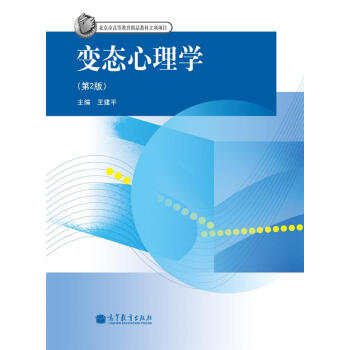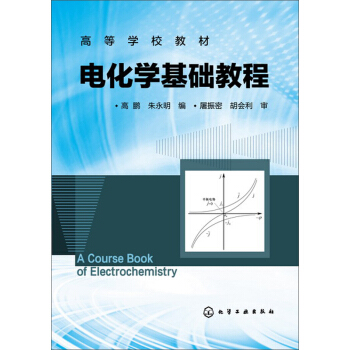

具体描述
内容简介
《经典电动力学(影印版)(第3版)》是一本有着很高知名度的电动力学教材,长期以来被世界上多所大学选用。本影印版是2001年出版的第三版。与前两版相比,第三版在保留基本经典电动力学内容的基础上,做了不少调整。如增加了一些关于数字计算方面的内容;删除了等离子体一章,将其部分内容在其它章节体现;增加了一些新的科技发展内容,如光纤、半导体波导管、同步辐射等。全书共分16章,可作为物理类专业电动力学课程的教材,尤其适合开展双语教学的学校,对于有志出国深造的人员也是一本必不可少的参考书。
作者简介
目录
Introduction and Survey 1I.1 Maxwell Equations in Vacuum, Fields, and Sources 2
I.2 Inverse Square Law, or the Mass of the Photon 5
I.3 Linear Superpositi0n 9
I.4 Maxwell Equations in Macroscopic Media 13
I.5 Boundary Conditions at Interfaces Between Different Media 16
I.6 Some Remarks on Idealizations in Electromagnetism 19
References and Suggested Reading 22
Chapter 1 / Introduction to Electrostatics 24
1.1 Coulombs Law 24
1.2 Electric Field 24
1.3 Gausss Law 27
1.4 Differential Form of Gausss Law 28
1.5 Another Equation of Electrostatics and the Scalar Potential 29
1.6 Surface Distributions of Charges and Dipoles and Discontinuities in the Electric Field and Potential 31
1.7 Poisson and Laplace Equations 34
1.8 Greens Theorem 35
1.9 Uniqueness of the Solution with Dirichlet or Neumann Boundary Conditions 37
1.10 Formal Solution of Electrostatic Boundary-Value Problem with Green Function 38
1.11 Electrostatic Potential Energy and Energy Density; Capacitance 40
1.12 Variational Approach to the Solution of the Laplace and Poisson Equations 43
1.13 Relaxation Method for Two-Dimensional Electrostatic Problems 47
References and Suggested Reading 50
Problems 50
Chapter 2 / Boundary- Value Problems in Electrostatics: I 57
2.1 Method of Images 57
2.2 Point Charge in the Presence of a Grounded Conducting Sphere 58
2.3 Point Charge in the Presence of a Charged, Insulated, Conducting Sphere 60
2.4 Point Charge Near a Conducting Sphere at Fixed Potential 61
2.5 Conducting Sphere in a Uniform Electric Field by Method of Images 62
2.6 Green Function for the Sphere; General Solution for the Potential 64
2.7 Conducting Sphere with Hemispheres at-Different Potentials 65
2.8 Orthogonal Functions and Expansions 67
2.9 Separation of Variables; Laplace Equation in Rectangular Coordinates 70
2.10 A Two-Dimensional Potential Problem; Summation of Fourier Series 72
2.11 Fields and Charge Densities in Two-Dimensional Corners and Along Edges 75
2.12 Introduction to Finite Element Analysis for Electrostatics 79
References and Suggested Reading 84
Problems 85
Chapter 3/Boundary- Value Problems in Electrostatics: H 95
3.1 Laplace Equation in Spherical Coordinates 95
3.2 Legendre Equation and Legendre Polynomials 96
3.3 Boundary-Value Problems with Azimuthal Symmetry 101
3.4 Behavior of Fields in a Conical Hole or Near a Sharp Point 104
3.5 Associated Legendre Functions and the Spherical Harmonics Ylm(θ,φ) 107
3.6 Addition Theorem for Spherical Harmonics 110
3.7 Laplace Equation in Cylindrical Coordinates; Bessel Functions 111
3.8 Boundary-Value Problems in Cylindrical Coordinates 117
3.9 Expansion of Green Functions in Spherical Coordinates 119
3.10 Solution of Potential Problems with the Spherical Green Function Expansion 112
3.11 Expansion of Green Functions in Cylindrical Coordinates 125
3.12 Eigenfunction Expansions for Green Functions 127
3.13 Mixed Boundary Conditions, Conducting Plane with a Circular Hole 129
References and Suggested Reading 135
Problems 135
Chapter 4/ Multipoles, Electrostatics of Macroscopic Media,Dielectrics 145
4.1 Multipole Expansion 145
4.2 Multipole Expansion of the Energy of a Charge Distribution in an External Field 150
4.3 Elementary Treatment of Electrostatics with Ponderable Media 151
4.4 Boundary-Value Problems with Dielectrics 154
4.5 Molecular Polarizability and Electric Susceptibility 159
4.6 Models for Electric Polarizability 162
4.7 Electrostatic Energy in Dielectric Media 165
References and Suggested Reading 169
Problems 169
Chapter 5/Magnetostatics, Faradays Law, Quasi-Static Fields 174
5.1 Introduction and Definitions 174
5.2 Blot and Savart Law 175
5.3 Differential Equations of Magnetostatics and Amperes Law 178
5.4 Vector Potential 180
5.5 Vector Potential and Magnetic Induction for a Circular Current Loop 181
5.6 Magnetic Fields of a Localized Current Distribution, Magnetic Moment 184
5.7 Force and Torque on and Energy of a Localized Current Distribution in an External Magnetic Induction 188
5.8 Macroscopic Equations, Boundary Conditions on B and H 191
5.9 Methods of Solving Boundary-Value Problems in Magnetostatics 194
5.10 Uniformly Magnetized Sphere 198
5.11 Magnetized Sphere in an External Field; Permanent Magnets 199
5.12 Magnetic Shielding, Spherical Shell of Permeable Material in a Uniform Field 201
5.13 Effect of a Circular Hole in a Perfectly Conducting Plane with an Asymptotically Uniform Tangential Magnetic Field on One Side 203
5.14 Numerical Methods for Two-Dimensional Magnetic Fields 206
5.15 Faradays Law of Induction 208
5.16 Energy in the Magnetic Field 212
5.17 Energy and Self-and Mutual Inductances 215
5.18 Quasi-Static Magnetic Fields in Conductors; Eddy Currents; Magnetic Diffusion 218
References and Suggested Reading 223
Problems 225
Chapter 6 / Maxwell Equations, Macroscopic Electromagnetism, Conservation Laws 237
6.1 Maxwells Displacement Current; Maxwell Equations 237
6.2 Vector and Scalar Potentials 239
6.3 Gauge Transformations, Lorenz Gauge, Coulomb Gauge 240
6.4 Green Functions for the Wave Equation 243
6.5 Retarded Solutions for the Fields: Jefimenkos Generalizations of the Coulomb and Biot-Savart Laws; Heaviside-Feynman Expressions for Fields of Point Charge 246
6.6 Derivation of the Equations of Macroscopic Electromagnetism 248
6.7 Poyntings Theorem and Conservation of Energy and Momentum for a System of Charged Particles and Electromagnetic Fields 258
6.8 Poyntings Theorem in Linear Dissipative Media with Losses 262
6.9 Poyntings Theorem for Harmonic Fields; Field Definitions of Impedance and Admittance 264
6.10 Transformation Properties of Electromagnetic Fields and Sources Under Rotations, Spatial Reflections, and Time Reversal 267
6.11 On the Question of Magnetic Monopoles 273
6.12 Discussion of the Dirac Quantization Condition 275
6.13 Polarization Potentials (Hertz Vectors) 280
References and Suggested Reading 282
Problems 283
Chapter 7 / Plane Electromagnetic Waves and Wave Propagation 295
7.1 Plane Waves in a Nonconducting Medium 295
7.2 Linear and Circular Polarization; Stokes Parameters 299
7.3 Reflection and Refraction of Electromagnetic Waves at a Plane Interface Between Two Dielectrics 302
7.4 Polarization by Reflection, Total Internal Reflection; Goos-Hanchen Effect 306
7.5 Frequency Dispersion Characteristics of Dielectrics, Conductors, and Plasmas 309
7.6 Simplified Model of Propagation in the Ionosphere and Magnetosphere 316
7.7 Magnetohydrodynamic Waves 319
7.8 Superpositi0n of ,Waves in One Dimension; Group Velocity 322
7.9 Illustration of the Spreading of a Pulse As It Propagates in a Dispersive Medium 326
7.10 Causality in the Connection Between D and E; Kramers-Kronig Relations 330
7.11 Arrival of a Signal After Propagation Through a Dispersive Medium 335
References and Suggested Reading 339
Problems 340
Chapter 8 / Waveguides, Resonant Cavities, and Optical Fibers 352
8.1 Fields at the Surface of and Within a Conductor 352
8.2 Cylindrical Cavities and Waveguides 356
8.3 Waveguides 359
8.4 Modes in a Rectangular Waveguide 361
8.5 Energy Flow and Attenuation in Waveguides 363
8.6 Perturbation of Boundary Conditions 366
8.7 Resonant Cavities 368
8.8 Power Losses in a Cavity; Q of a Cavity 371
8.9 Earth and Ionosphere as a Resonant Cavity: Schumann Resonances 374
8.10 Multimode Propagation in Optical Fibers 378
8.11 Modes in Dielectric Waveguides 385
8.12 Expansion in Normal Modes; Fields Generated by a Localized Source in a Hollow Metallic Guide 389
References and Suggested Reading 395
Problems 396
Chapter 9/Radiating Systems, Multipole Fields and Radiation 407
9.1 Fields and Radiation of a Localized Oscillating Source 407
9.2 Electric Dipole Fields and Radiation 410
9.3 Magnetic Dipole and Electric Quadrupole Fields 413
9.4 Center-Fed Linear Antenna 416
9.5 Multipole Expansion for Localized Source or Aperture in Waveguide 419
……
Chapter 10 / Scattering and Diffraction 456
Chapter 11/Special Theory of Relativity 514
Chapter 12/Dynamics of Relativistic Particles and Electromagnetic Fields 579
Chapter 13/Collisions, Energy Loss, and Scattering of Charged Particles,Cherenkov and Transition Radiation 624
Chapter 14/Radiation by Moving Charges 661
Chapter 15 / Bremsstrahlung, Method of Virtual Quanta,Radiative Beta Processes 708
Chapter 16 / Radiation Damping, Classical Models of Charged Particles 745
Appendix on Units and Dimensions 775
1 Units and Dimensions, Basic Units and Derived Units 775
2 Electromagnetic Units and Equations 777
3 Various Systems of Electromagnetic Units 779
4 Conversion of Equations and Amounts Between SI Units
and Gaussian Units 782
Bibliography 785
Index 791
前言
It has been 36 years since the appearance of the first edition of this book, and 23 years since the second. Such intervals may be appropriate for a subject whose fundamental basis was completely established theoretically 134 years ago by Maxwell and experimentally 110 years ago by Hertz. Still, there are changes in emphasis and applications. This third edition attempts to address both withoutany significant increase in size. Inevitably, some topics present in the second edition had to be eliminated to make room for new material. One major omission is the chapter on plasma physics, although some pieces appear elsewhere. Readers who miss particular topics may, I hope, be able to avail themselves of the second edition.
The most visible change is the use of SI units in the first 10 chapters. Gaussian units are retained in the later chapters, since such units seem more suited to relativity and relativistic electrodynamics than SI. As a reminder of the sys- tem of units being employed, the running head on each left-hand page carries "——SI" or "——G" depending on the chapter.
My tardy adoption of the universally accepted SI system is a recognition that almost all undergraduate physics texts, as well as engineering books at all levels, employ SI units throughout. For many years Ed Purcell and I had a pact to support each other in the use of Gaussian units. Now I have betrayed him! Al- though this book is formally dedicated to the memory of my father, I dedicate this third edition informally to the memory of Edward Mills Purcell (1912-1997), a marvelous physicist with deep understanding, a great teacher, and a wonderful man.
精彩书摘
编辑推荐
媒体评论
用户评价
这本书的到来,就像是给我这位业余物理爱好者注入了一剂强心针,也带来了不小的挑战。我选择英文版,一方面是想直接接触原汁原味的学术表达,另一方面也是希望能提高自己的专业阅读能力。杰克逊的《经典电动力学》第三版,在物理学界几乎是无人不知、无人不晓的圣经级别的教材。我之前尝试过其他版本的教材,但总感觉差了点什么,不是逻辑不够严谨,就是例子不够丰富。而杰克逊的这本书,在我看来,最大的特点就是它的“全”和“深”。它不仅仅是讲解理论,更重要的是教会你如何去思考,如何去建立物理模型,以及如何将抽象的数学语言转化为具体的物理图像。我特别喜欢书中关于多极展开的部分,那简直是一门艺术!如何将复杂的电荷分布近似为一个点电荷,或者一个偶极子,甚至更高阶的多极矩,这些都是理解宏观电磁现象的关键。我花了很多时间去理解多极展开的每一项物理意义,以及它们是如何贡献于总的电磁场。有时候,我会看着书上的图,想象着那些不同电荷分布会产生怎样的电场,这种可视化过程对我来说非常重要。而且,这本书的习题也非常有深度,很多习题并非简单的计算题,而是需要你对概念有深刻的理解,并且能够运用所学的知识去解决一些实际问题,或者去探索一些理论的边界。我记得我做过一道关于天体物理中电磁波传播的习题,那道题结合了电动力学和天体物理的知识,需要你计算恒星发出的电磁波在星际介质中的衰减情况。刚开始看到题目的时候,觉得无从下手,但是通过查阅书中的相关章节,并且结合一些公开的物理学资料,我最终还是找到了解决问题的思路。虽然过程很艰辛,但最终解出来的那一刻,成就感爆棚。这本书无疑是一份宝贵的财富,它让我看到了物理学的博大精深,也让我对未来的学习充满了期待。
评分这本书的排版和设计都非常出色,即使是阅读英文原版,也感到非常舒适。我之所以选择这本书,是因为它被誉为电动力学领域的“圣经”,其权威性和深度毋庸置疑。我最感兴趣的是书中关于电磁场的边界条件和能量耗散的讨论。我曾设想过,当电磁场遇到一个不均匀的介质界面时,会发生什么?这本书为我提供了详细的解答。它解释了在不同介质边界处,电场和磁场分量如何变化,以及能量是如何在界面处损耗的。我花了很多时间去理解不同介质的介电常数、磁导率和电导率对电磁场行为的影响。书中的例子,例如微波炉加热食物的原理,以及无线通信中的信号衰减,都让我对这些理论有了更深刻的理解。而且,书中对于一些更高级的概念,例如表面波和表面阻抗,也进行了深入的介绍。我曾设想过,如何在微波器件的设计中利用这些概念来控制电磁波的传播。这本书就像一个百科全书,里面涵盖了电动力学的方方面面,为我提供了广阔的学习空间。我深深地体会到,掌握电动力学的知识,不仅能够帮助我理解自然界的各种现象,还能够为我今后的科研工作打下坚实的基础。
评分这本《包邮 经典电动力学 第三版 英文版 杰克逊著 Classical Electrodynam》是我近期最满意的一次图书购买。我一直在寻找一本能够系统深入地讲解电动力学知识的英文原版教材,而杰克逊的这本绝对是我的不二之选。第三版相较于前两版,在内容更新和细节补充上做得相当到位,尤其是我关心的几个前沿课题,比如拉莫尔公式的更广泛应用,以及一些量子电动力学的初步介绍,都让我眼前一亮。我最喜欢的是书中关于电磁场的能量和动量守恒的讨论。理解能量守恒不仅是理论上的需要,更是对物理世界运行规律的一种深刻认识。我记得我花了很多时间去理解坡印廷矢量的物理意义,以及它如何描述电磁能量的流动。书中通过一些具体的例子,比如电磁波在自由空间中的传播,以及在导体中的损耗,来阐释能量守恒定律。这些例子让我能够将抽象的数学公式与具体的物理现象联系起来。另外,关于磁流体力学(MHD)的部分,虽然篇幅不算太长,但为我打开了新的视野。我一直对天体物理和等离子体物理感兴趣,而MHD是理解这些领域的重要基础。书中关于磁场如何影响导电流体的运动,以及反过来流体运动如何产生磁场的讨论,让我受益匪浅。我曾尝试去阅读一些关于太阳活动和星际介质的科普文章,而有了这本书作为基础,我能够更深刻地理解其中涉及到的电磁学原理。虽然这本书的数学要求很高,很多推导过程都需要扎实的微积分和线性代数基础,但我认为这种挑战是值得的。它不仅仅是在传授知识,更是在培养一种物理思维方式。
评分这本书的章节划分非常合理,让我能够循序渐进地学习电动力学的知识。我特别喜欢书中关于电磁声学联立的讨论。我曾设想过,声音和电磁波之间是否存在某种联系?这本书为我提供了深刻的解答。它解释了在某些特殊的情况下,电磁场和声场之间会发生耦合,例如在压电材料中,电场可以引起声波的振动,反之亦然。我花了大量时间去理解压电效应和表面声波等概念,以及它们在传感器和滤波器设计中的应用。书中的例子,例如智能手机中的扬声器和麦克风,以及超声波成像技术,都让我对这些理论有了更直观的理解。而且,书中对于一些更复杂的电磁声学耦合问题,例如在等离子体中的声波传播,也进行了初步的介绍。我曾设想过,如何在天体物理学中利用电磁声学耦合理论来研究恒星内部的结构和动力学。这本书就像一个桥梁,连接了电动力学和声学两个看似独立的领域。我深深地体会到,掌握电磁声学联立的知识,不仅能够帮助我理解自然界的各种现象,还能够为我今后的科研工作提供创新的思路。
评分啊,这本《包邮 经典电动力学 第三版 英文版 杰克逊著 Classical Electrodynam》真是让我又爱又恨,完全是一场智力马拉松!拿到书的时候,看着厚实的一摞,心里还是有点忐忑的,毕竟电动力学这门课就以“劝退”闻名。翻开第一页,英文原文扑面而来,虽然学过一些英文文献,但面对这种高度专业化的内容,还是需要一段适应期。不过,好在是第三版,据说在内容上有所更新和完善,这点倒是让人安心不少。我最期待的是其中关于辐射理论的部分,每次看到那些复杂的积分和微分方程,总觉得背后隐藏着宇宙最深邃的奥秘,而杰克逊在这方面是公认的大师,他的阐述方式,即使是初读也会感到一种严谨的逻辑和深刻的洞察力。我花了很长时间去理解其中的推导过程,尤其是那些张量的运算,一开始真的让我头疼不已。我尝试着自己动手写下来,一步一步地跟着书上的例子进行演算,有时候一个公式卡在那里半天,就会反复回顾前面讲过的概念,试图找到那个关键的联系。我记得有一次,在研究关于电磁波在介质中的传播时,一个关于阻抗匹配的推导,我大概花了两个晚上才完全弄明白。那个过程就像是在黑暗中摸索,突然间,一道光闪过,豁然开朗。这种感觉,大概就是学习物理最迷人的地方吧。而且,这本书的排版设计也很有意思,清晰的图示和公式编号,让我在查找和引用的时候非常方便。尽管有时候会觉得内容有点过于密集,需要反复咀嚼,但整体来说,它确实为我打开了一扇通往更深层物理世界的大门,让我对电磁现象有了更深刻、更系统的认识。我计划在接下来的几个月里,把它作为我的主要学习资料,希望能一步步征服它,真正掌握电动力学的精髓。
评分这本书的文字流畅且逻辑严谨,让我沉浸在电动力学的世界里。我特别喜欢书中对麦克斯韦方程组的介绍,它以一种清晰而深刻的方式,展示了电场和磁场之间的动态联系。我花了很多时间去理解每个方程的物理意义,以及它们在不同物理情境下的表现。书中的例子非常贴切,从简单的平行板电容器,到复杂的导波管,都进行了详细的分析。我常常在阅读的时候,会主动去设想一些实际的物理场景,然后尝试用书中的理论来解释它们。例如,我曾设想过手机信号是如何工作的,以及无线充电的原理,而这本书为我提供了深刻的理论基础。而且,书中对于相对论电动力学的引入也让我感到非常兴奋。它将狭义相对论的思想融入到电动力学中,揭示了电磁现象与时空之间的深刻联系。我花了很长时间去理解四维矢量和时空度规在电动力学中的作用。书中的例子,比如洛伦兹变换对电场和磁场的影响,以及光速不变原理的体现,都让我对相对论有了更直观的认识。虽然这本书的数学要求很高,但作者的讲解方式非常循序渐进,能够帮助读者克服学习上的困难。我深深地体会到,学习物理不仅仅是记忆公式和概念,更重要的是培养一种严谨的逻辑思维和探索精神。
评分这本书的整体风格让我印象深刻,它不是那种“填鸭式”的教学,而是引导读者一步步地去探索和发现。我从静电场部分开始,就感觉自己被带入了一个严谨而充满逻辑的世界。我特别欣赏书中对于基本定律的推导过程,往往会从最简单的假设出发,然后层层递进,最终得出普适性的结论。我花了大量时间去理解麦克斯韦方程组的四个基本方程,以及它们是如何统一描述了电场和磁场。书中的例子非常丰富,从简单的点电荷和电偶极子,到复杂的导体和介质边界问题,都进行了详细的分析。我尤其喜欢关于电磁波在不同介质中传播的讨论,它让我理解了光为什么会发生反射、折射,以及各种光学现象背后的物理机制。我记得有一次,我在研究关于球对称电荷分布产生的电场时,书中的推导过程让我眼前一亮。它利用了高斯定律,将一个原本复杂的积分问题简化成了非常直观的几何分析。这种“化繁为简”的智慧,是这本书最大的魅力之一。而且,书中对于一些概念的解释也非常到位,比如场、势、源等,都进行了清晰的界定和深入的阐述。我尝试着将书中的内容与我之前学习过的物理知识进行联系,发现了很多新的理解角度。例如,当我读到关于洛伦兹力公式的时候,我突然意识到,这个看似简单的公式,其实凝聚了电场力和磁场力对带电粒子作用的统一描述。这本书的语言风格虽然是学术性的,但并不枯燥,反而充满了智慧的光芒,让我读起来津津有味。
评分这本书的语言风格非常清晰且富有条理,让我能够轻松地跟随作者的思路。我特别欣赏书中关于电磁散射的详细分析。我曾设想过,当一个电磁波遇到一个物体时,会发生什么?它会被反射、吸收,还是衍射?这本书为我提供了深刻的解答。它解释了瑞利散射、米氏散射等不同类型的散射现象,以及它们的物理机制。我花了大量时间去理解散射截面和散射角等概念,以及它们如何影响散射的强度和方向。书中的例子,例如大气中光散射形成的彩虹,以及雷达探测的原理,都让我对这些理论有了更直观的理解。而且,书中对于一些更复杂的散射问题,例如多体散射和共振散射,也进行了初步的介绍。我曾设想过,如何在天体物理学中利用散射理论来研究星际介质的成分和结构。这本书就像一个指南针,为我指引了探索电磁散射领域的方向。我深深地体会到,掌握电磁散射的知识,不仅能够帮助我理解自然界的各种现象,还能够为我今后的科研工作提供重要的理论支持。
评分拿到这本书,我首先被它厚重的分量和精致的装订所吸引。作为一名对电磁学充满好奇的物理爱好者,我一直渴望能有一本权威的英文教材来系统地学习这门学科,而杰克逊的《经典电动力学》第三版,正是我的理想选择。我最期待的是书中关于电磁辐射的部分,它涉及到了电磁波的产生、传播和接收,是电动力学理论的集大成者。我花了很多时间去理解拉莫尔公式的推导,以及如何利用它来计算不同运动电荷的辐射功率。书中的例子非常具有启发性,例如关于加速电子的同步辐射,以及天空中各种天体发出的电磁波的来源。我常常在阅读的时候,脑海中会浮现出各种物理图像,想象着那些看不见的电磁波是如何在宇宙中穿梭的。而且,这本书在数学工具的运用上也给我留下了深刻的印象。它不仅介绍了傅里叶分析、拉普拉斯变换等常用的数学方法,还深入探讨了张量分析和微分几何在电动力学中的应用。我曾尝试去运用这些数学工具来解决一些自己遇到的问题,虽然过程充满挑战,但最终的成果却让我非常有成就感。我记得我曾经尝试用张量的方法来推导电磁场的能量守恒定律,这个过程比我之前用标量和向量推导要复杂得多,但一旦理解了张量运算的本质,就能够更清晰地看到物理量的内在联系。这本书就像一个宝库,里面蕴藏着无数的知识和智慧,等待我去发掘。
评分这本书的触感和纸张质量都相当不错,封面设计简洁大气,散发着一种沉甸甸的学术气息。我之所以选择第三版,是因为听说它在内容上进行了大量的修订和补充,尤其是在相对论电动力学方面,据说有更详尽的阐述。作为一名即将进入研究生阶段学习的物理学爱好者,我深知电动力学是必修的一门硬课,而杰克逊的这本书,无疑是这条道路上最重要的路标之一。我开始阅读的时候,从最基础的静电场部分入手,试图理解高斯定律、安培环路定律等基本定律是如何在不同的几何条件下应用的。我特别关注书中关于边界条件的讨论,这在实际应用中非常关键,例如在介质界面处的电场和磁场行为。我花了不少时间去理解那些复杂的边界条件方程,并且尝试在脑海中构建不同的物理场景,去模拟电磁场是如何在不同介质间传递和反射的。书中关于电磁势的引入和运用,对我来说也是一个重要的学习点。理解标势和矢势之间的关系,以及它们如何简化电磁场的描述,是掌握更复杂理论的基础。我记得我花了整整一个周末,去推导一个简单偶极子的辐射场,那个过程涉及到了很多积分和向量微积分的技巧,我反复检查每一个步骤,确保没有出错。当最终得到那个熟悉的辐射场表达式时,那种感觉非常奇妙,仿佛能够“看到”电磁波是如何从一个简单的源发散出去的。这本书的语言风格非常严谨,但也充满了一种数学的美感。每一个公式的推导都像是精雕细琢的艺术品,逻辑严密,结构清晰。我常常在阅读的过程中,停下来,仔细品味那些数学表达式所蕴含的物理意义。这本书的价值,远不止于教科书本身,它更像是一本引人入胜的科普读物,只是它的读者群体相对小众,需要一定的基础才能领略其中的奥妙。
评分经典电动力学的学习资料,大牛推荐
评分很好!纸张也不错排版清晰!
评分书是影印的,纸张比较薄,凑合用吧
评分还不错
评分收到书本了,感觉自己还是要努力学英语才行
评分服务态度极差,完全没有一点职业精神
评分不错,就是快递太慢
评分学电动很好的书.
评分服务态度极差,完全没有一点职业精神
相关图书
本站所有内容均为互联网搜索引擎提供的公开搜索信息,本站不存储任何数据与内容,任何内容与数据均与本站无关,如有需要请联系相关搜索引擎包括但不限于百度,google,bing,sogou 等
© 2025 book.idnshop.cc All Rights Reserved. 静思书屋 版权所有

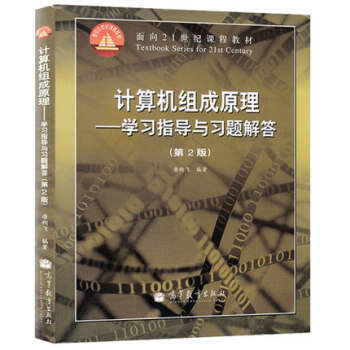


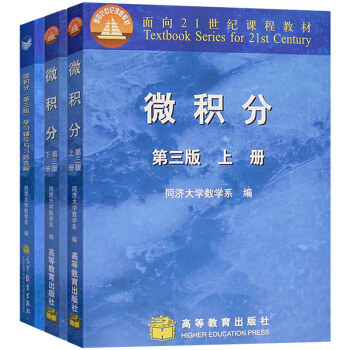
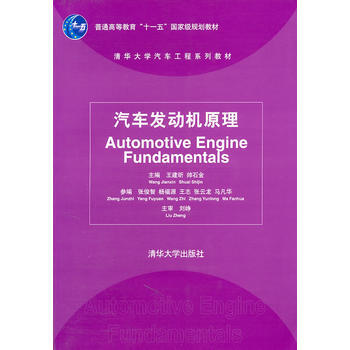
![[二手] 物理化学:第五版 下册 傅献彩 南大版 pdf epub mobi 电子书 下载](https://pic.tinynews.org/16005966127/59a76d6bN0799665c.jpg)
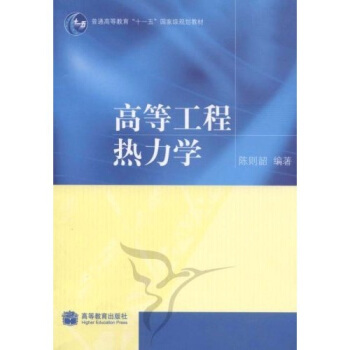
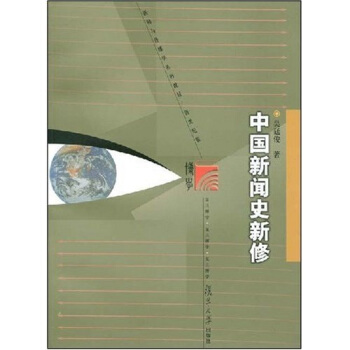
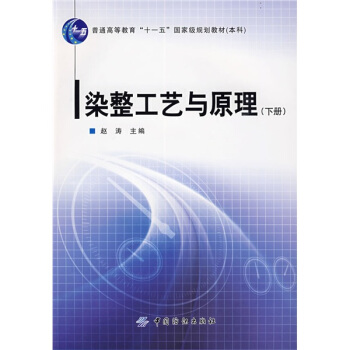
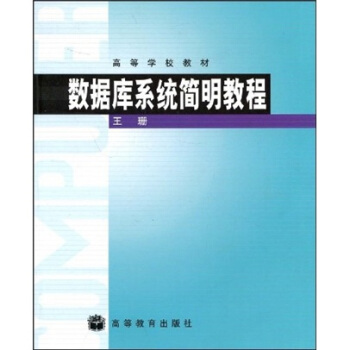
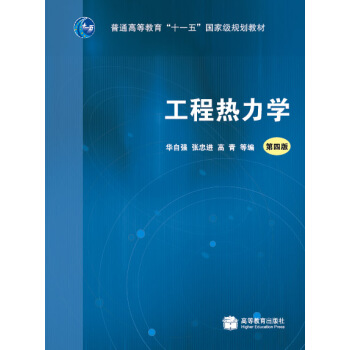



![计算物理学(第2版) [Computational Physics Second Edition] pdf epub mobi 电子书 下载](https://pic.tinynews.org/10904477/6cea3959-2061-4502-8d16-e456241cd5c8.jpg)
